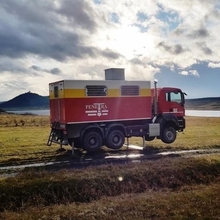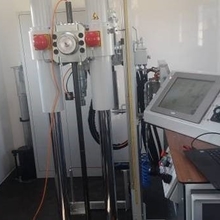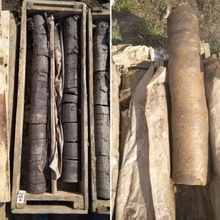Sustainable Use of Mining Waste Dumps (SUMAD)
Project Plan
The SUMAD project execution is scheduled over 36 months and includes five work packages:
WP1 - Identification and Viability Assessment of Potential Uses for Spoil Dumps
The general objective of this work package is to address the fundamental question of the SUMAD project-‘What are the best post-mining usages for waste dumps?’ To answer this question, the scale of spoil dumps across Europe, their characteristics, and their layouts will be fully mapped. This will allow a better overview of the different types of dumps and, therefore better guide the decision as to appropriate revitalisation techniques. As part of this characterisation process, the ground properties will be determined, local and national laws relating to development recorded, and local physical limitations noted. In addition, the needs and desires of local communities will be discerned to ensure that the proposed revitalisation activities address the requirements of the people on which the spoil dump has a daily impact. Following this characterisation process, partners will work together and with mine operators and local authorities to determine a wide range of uses for spoil dumps, taking into account all the factors discussed above. Two potential uses which will be examined are wind turbine and photovoltaic cell deployment. A computer-based assessment tool will be developed to aid in this process, which will balance the positive and negative impacts of a range of different potential revitalisation activities. The SUMAD project will primarily focus on the geotechnical aspects as the engineering challenges associated with novel revitalisation options are mostly connected to the geotechnical aspects of the design.
WP2 - Geotechnical Physical Modelling of Spoil Material and Foundation Systems
The general objective of this work package is to develop the capabilities and reliability of performing geotechnical centrifuge testing on spoil material with a particular focus on degradation and time-dependent creep behaviour. The fundamental behaviour of geomaterials is highly dependent on ground stress levels, which are not replicated in small scale models. To replicate the stress levels present in a full-scale scenario, small-scale models can be placed into a geotechnical centrifuge. Then, spinning the model and increasing the acceleration level increases the self-weight of the material within the model. It can thus recreate the full-scale stress levels and material behaviour. Spoil material exhibits very complex time-dependent strength and stiffness behaviour, and therefore, it has a significant impact on the performance and design of the proposed foundation systems. There has been no previous research into modelling the long term response of spoil-structural systems where both time-dependent properties of the spoil material and long term loading of the structural systems will have a major impact on performance. Hence the SUMAD project will provide original and innovative insights, delivering vital design guidance to practising engineers.
WP3 - Numerical Simulation of Spoil Material and Foundation Systems
The general objective of this work package is to develop a numerical model which can precisely simulate the spoil-foundation interactions with a wide range of spoil and foundation configurations. The results of centrifuge experiments will be used to validate the model. The numerical methodology then developed will be used to examine a wide range of different foundation systems, imposed loading and climatic conditions to better understand how the response of the foundation systems may vary from site to site. This work package also aims to investigate the interface behaviour between spoil material and foundation. It is important to evaluate the proper simulation of the spoil-foundation interaction in the numerical model. Hence, small-scale tests will be performed that will allow the interface behaviour to be understood. Also, the simple numerical simulations of these interface tests will ensure the behaviour has been precisely captured within the numerical model. The knowledge obtained through numerical modelling results in the SUMAD project will be critical to deciding the design guidelines for practising engineers.
WP4 - Ground Improvement, Monitoring and Risk Analysis
This work package aims to quantify the risk of doing construction on spoil material, examine ways to minimise it, and methods of monitoring when the performance of the foundation systems is not within the designed remits. Trials of ground improvement works will be performed on at least one candidate test site, and the ground response will be monitored over a prolonged period during the project. This data will allow the response recorded within the physical and numerical models to be further validated. In addition, it will provide vital information regarding the logistical challenges of performing ground improvement works on spoil dumps. A computer-based SUMAD Risk Management Tool (SUMAD RMT) will be developed by considering all sorts of ‘risk’ factors. This tool will consider social factors, performance variability, sustainability credentials, local limitations and economic reward. The capability of the SUMAD RMT to balance the quantitative and qualitative drivers while selecting an optimal revitalisation activity is critical to successfully addressing the sustainability and socio-economic priorities of the SUMAD project.
WP5 - Reporting, Coordination and Dissemination
This work package contains tasks related to the reporting of the SUMAD research in addition to the organisation of project meetings. In line with the project objectives, the dissemination will include material suitable for explaining the work of the SUMAD project and its importance with regards to the sustainable revitalisation of spoil-dumps in their region to key stakeholders. This work package also includes organising a stakeholder-focused workshop that will combine authorities and developers with project partners to transfer knowledge and understanding to these key outcomes.

Field Cone Penetration Tests in a project site (credits: VUHU)

Field Cone Penetration Tests in a project site (credits: VUHU)

Undisturbed spoil cores received from the field